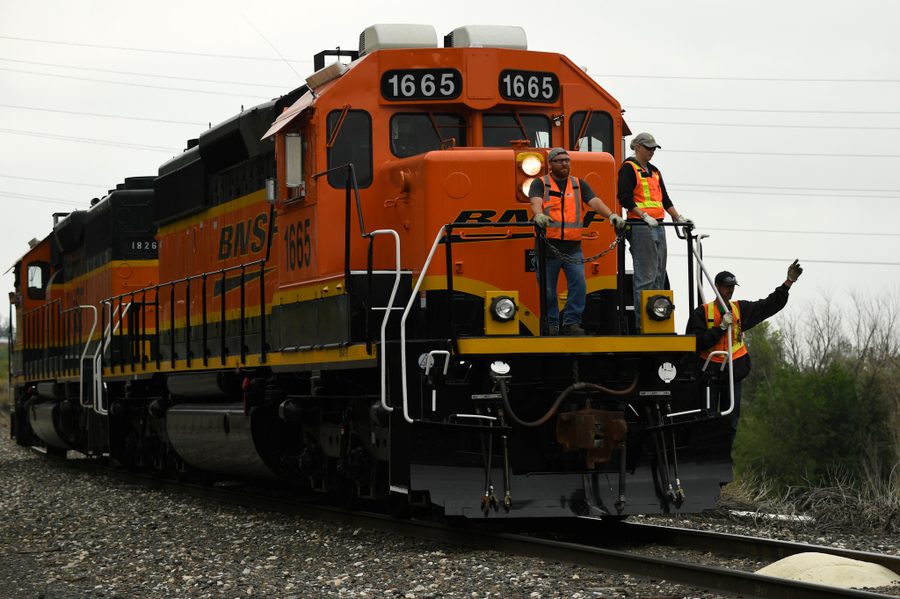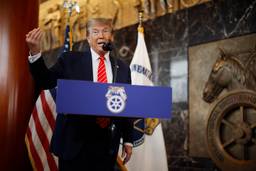U.S. Rail Workers Are Poised to Begin a National Strike Next Week
After rejecting an agreement brokered by the White House, railroad workers could walk off the job ahead of the busy holiday season.
Jeff Schuhrke

Update: On Monday, President Biden announced he was asking Congress to intervene to prevent a rail strike by forcing workers to accept the tentative agreement his administration helped broker earlier this year between carriers and unions. That deal has been rejected by four rail unions, keeping the possibility of a strike on the table. And on Tuesday, Democratic House Speaker Nancy Pelosi and Senate Majority Leader Chuck Schumer said that they would act on Biden’s request and advance legislation to end the labor dispute.
Despite the intervention of the Biden administration, after nearly three years of contract negotiations, workers who operate the nation’s freight railroads are poised to go on a nationwide strike as early as next Friday.
“Our members, and all rail labor in general, are frustrated,” said Matt Weaver, a Toledo-based rail worker and member of the Brotherhood of Maintenance of Way Employes Division (BMWED). “It feels like there’s no respect for us.”
Last week, the two largest rail unions announced a split decision on whether to approve a tentative, five-year agreement brokered ahead of a strike that was previously set to begin in September. The Brotherhood of Locomotive Engineers and Trainmen (BLET) narrowly ratified the agreement with 53.5% of members voting in favor, while the deal was rejected by just over 50% of train and engine service members of the Sheet Metal, Air, Rail and Transportation Workers-Transportation Division (SMART-TD).
SMART-TD joins three other rail unions that voted down the tentative agreement: the BMWED, the Brotherhood of Railroad Signalmen and the International Brotherhood of Boilermakers.
Absent a new agreement, the four unions that rejected the deal — which together represent approximately 55% of the unionized U.S. rail labor force — are set to strike on December 9. The BLET and the other eight rail unions that already ratified the deal have pledged to honor the picket lines should there be a work stoppage. The four unions poised to strike represent around 60,000 workers, and if members of other rail unions refuse to cross the picket line, the number of those not working could rise to over 115,000.
While media outlets such as CNN, Forbes and NBC News have inundated the public with stories of the economic damage a railroad strike would inflict, and over 400 business groups call on Congress to preemptively shut down a strike, less attention has been paid to the role of the highly profitable rail carriers in creating the current standoff. Central to the dispute are the carriers’ draconian attendance policies, which often don’t allow workers to take sick leave, force them to stay on-call 24/7 and keep them away from their families.
“These conditions are grueling. Workers have not had a chance to take the downtime we need to survive emotionally, mentally and physically,” said Marilee Taylor, a recently retired locomotive engineer and BLET member in Chicago. “It’s something that’s not humane, it steals the humanity from your soul.”
In recent decades, major Class I rail carriers like Union Pacific, Norfolk Southern, CSX and BNSF (owned by billionaire Warren Buffett) have implemented precision scheduled railroading (PSR) — a lean production model designed to maximize shareholder profits by slashing expenses.
Because of PSR cost-cutting, over the past six years, the Class I railroads have downsized their collective workforce by 29%, leaving the industry woefully understaffed and putting extra strain on remaining workers.
“The root issue is adequate staffing,” said Ross Grooters, an engineer and BLET member in Iowa. “The operating model is fewer of us doing more work. It’s made the workplace more unsafe, and it’s made our lives more miserable.”
Meanwhile, PSR has allowed the rail carriers to make record profits, with shareholders raking in $183 billion in buybacks and dividends since 2010.
“Deep resentment”
The tentative agreement reached in September was largely based on the recommendations of the Presidential Emergency Board (PEB), a panel of labor experts appointed by President Joe Biden this summer to help resolve the dispute. While the PEB’s report addressed wages and healthcare, it sidestepped critical questions of sick leave and vacation days.
The September agreement, reached with the help of Labor Secretary Marty Walsh and Biden’s direct involvement, attempted to go above the PEB recommendations by allowing workers to take voluntary assigned days off and adding one paid personal day.
But the deal was criticized by Railroad Workers United (RWU), an inter-union, cross-craft solidarity caucus that brings together rank-and-file rail workers across North America. RWU’s steering committee called on union members to vote against ratifying the agreement because they argued it does not adequately address the central quality-of-life issues like scheduling and time off.
“The changes they’ve attempted to make around quality of life are not concretely defined and still open to bargaining and potentially binding arbitration,” said Grooters, who serves as RWU co-chair. “We weren’t voting on anything that was spelled out concretely around quality-of-life issues, other than the additional medical time off.”
“Nothing in this agreement serves to better the quality of living of the workforce,” Taylor said. “What is historic here is the amount of people who voted against it. Whether or not it passed by a razor thin margin, the fact that it’s even a margin shows that there’s still deep resentment that is not going away.”
Under the Railway Labor Act’s cumbersome bargaining process, Congress can prevent a strike by forcing both sides to accept a contract. In September, Senate Republicans attempted to impose the PEB recommendations while negotiations were still in progress, but were stopped by Sen. Bernie Sanders (I-Vt.).
Earlier this month, Walsh said that Congress would “have to take action to avert a strike” if a new deal isn’t reached, and now Biden reportedly plans to ask Congress to step in.
Weaver noted that Congress could choose to force the railroads to accept an agreement more beneficial towards workers. “I’d like to see a lot of pressure from Congress on the carriers,” he said. “But they have a lot of money, they lobby a lot and do some campaign finance work that we just can’t afford.”
Still, some Congressmembers have voiced support for the workers’ demands.
Rep. Peter DeFazio (D-Ore.), chair of the House Transportation and Infrastructure Committee, recently told Politico: “I’m hoping the railroads will get reasonable, this is the 21st Century and to have skilled workers being denied sick leave, even unpaid sick leave, is unconscionable. Freight rail companies are watching their record profits, ‘Oh my God, if we give people paid sick leave our stock might drop by a dollar.’ Give me a break.”
“It is beyond belief that in the year 2022 rail workers in America have zero guaranteed paid sick days,” Sanders tweeted last week. “The rail industry, which made a record-breaking $20 billion in profits last year, must come to the table and negotiate a contract which treats their workers with respect.”
The fight continues
While preparing for a possible strike on December 9, rail union activists are also thinking about the longer-term struggle to protect and improve freight rail for workers, shippers and consumers.
“The fight for what we need as railroad workers and what will benefit the safety and supply chain for the country doesn’t stop just because an agreement is reached,” Grooters said, adding that the next round of contract bargaining is set to begin in only two years. “Right now, the way things sit, I don’t think the industry is sustainable.”
In addition to putting extra strain on rail workers, PSR cost-cutting has been blamed for exacerbating the supply-chain crisis and resulting inflation, with freight trains running with more cars and more cargo than existing infrastructure is equipped to handle, and carriers misrouting rail cars just to get them moving.
The Class I carriers appear to be profiting from this dynamic by charging shippers demurrage fees for freight stuck in supply-chain bottlenecks, collecting at least $1.18 billion in such fees last year.
“They have consciously wrecked the railroad supply chain in order to extract maximum profits,” Taylor said of the major rail carriers. “Their interest is not in moving freight. Not moving freight is more profitable. They refuse to operate the railroads in the interests of this nation.”
Railroad Workers United issued a resolution last month expressing support for public ownership of the nation’s railways — something common in many other countries.
“Just like our airports, seaports and interstate highways, we should make rail infrastructure a public good,” Grooters said. “Then it can be managed to prevent the supply chain from being harmed by investors who don’t have the country’s best interest in mind.”
In planning for the next round of bargaining, Weaver said he hopes to see stronger unity between the dozen rail unions, pointing to how some unions were already ratifying the tentative agreement while others were still negotiating.
“We had two bargaining coalitions this time, but then that fell apart. There was no signatory requirement that you don’t ratify unless everyone ratifies — and we need that,” he said. “We need good bargaining solidarity, one bargaining coalition to bring rail labor together. That’s how we win. Solidarity is the key to the success of the working class.”
Jeff Schuhrke is a labor historian and assistant professor at the Harry Van Arsdale Jr. School of Labor Studies, SUNY Empire State University. He is the author of Blue-Collar Empire: The Untold Story of US Labor’s Global Anticommunist Crusade.







